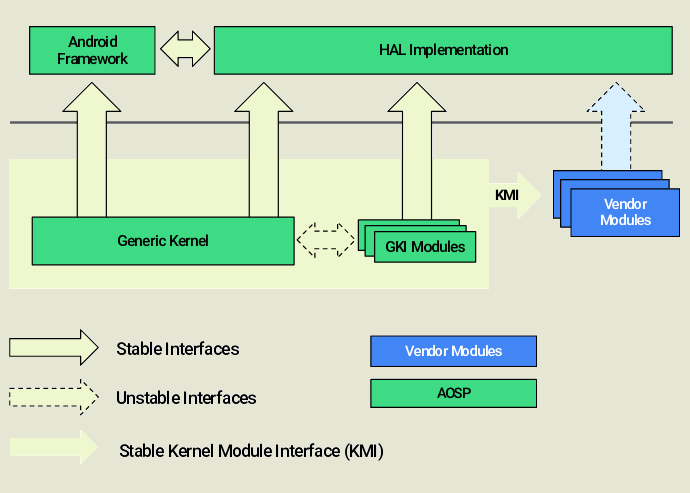At the last conference Linux plumbers 2021 Google told about the success of the Android translation initiative for the use of the usual Linux kernel instead of applying the nuclear version, including changes specific to the Android platform.
The most important change in the development was Solution On the transition after 2023 to the “Upstream First” model, implying the development of all the new core capabilities required in the Android platform, directly in the main Linux core, and not in their individual branches (functionality first will move to the main core, and then used in Android , and not vice versa). At 2023 and 2024, the transfer to the main kernel of all 
The interfaces needed for manufacturers are implemented in the form of hooks that allow you to change the behavior of the kernel without making changes to the code. In total, 194 ordinary hooks, similar to trace points (TRACEPOINT), and 107 specialized hooks, which allow you to launch handlers in a neatomaric context, are proposed in the Android12-5.10 kernel. In the GKI kernel, the equipment manufacturers are prohibited from the imposition of specific patches to the main core, and components for supporting hardware must be supplied only in the form of additional kernel modules in which compatibility with the main core must be ensured.
Recall that the Android platform develops its own kernel branch – Android Common Kernel , based on Which for each device are formed separate specific assemblies. In each Android branch, manufacturers are provided by several nuclear layout options for their devices. For example, in Android 11, it was offered to choose from three base kernels at once – 4.14, 4.19 and 5.4, and for Android 12, the basic kernels 4.19, 5.4 and 5.10 will be proposed. Option 5.10 is decorated as Generic Kernel Image, in which the capabilities required for OEM manufacturers are transferred to UPStream, put into modules or transferred to the Android Common Kernel.